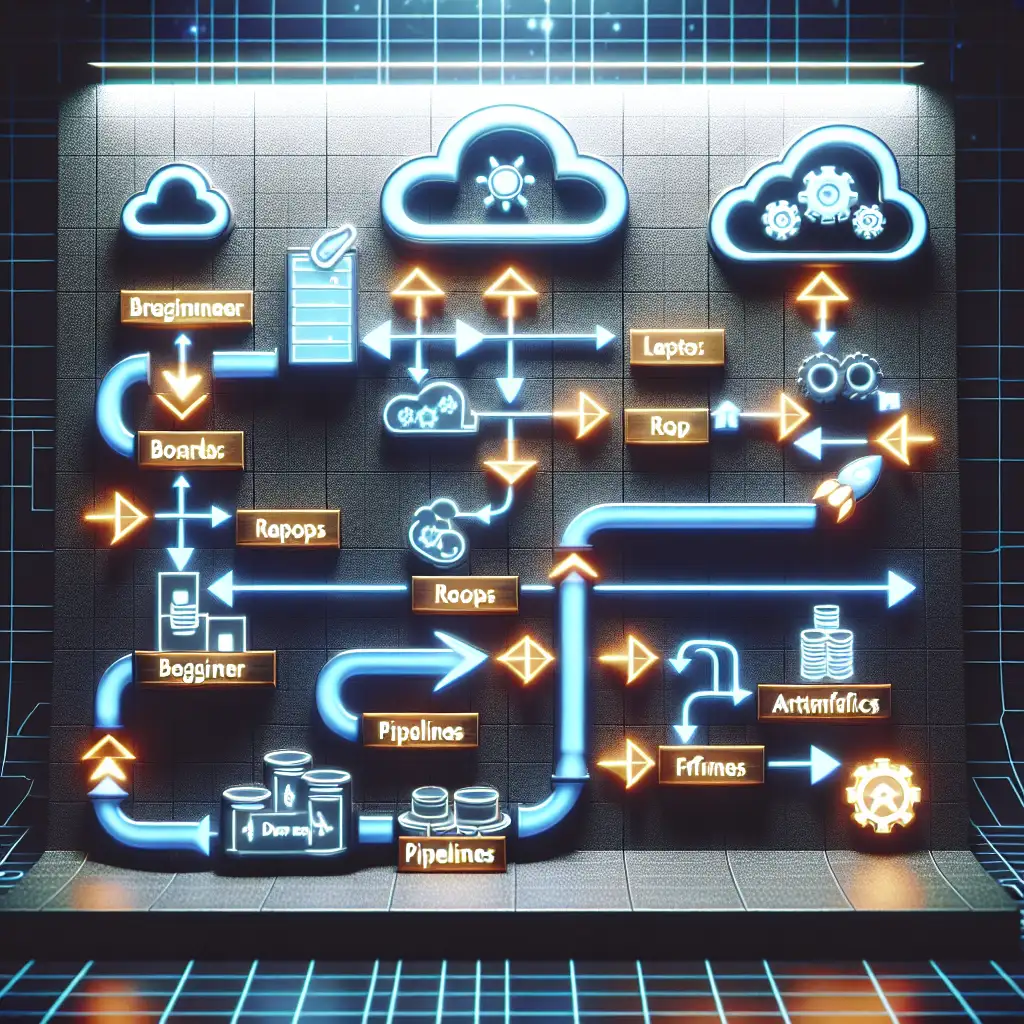Mastering Azure DevOps: Applied Steps from First Commit to Continuous Delivery
Modern software delivery pipelines live and die by automation, reproducibility, and traceability. Azure DevOps, while broad, brings all these aspects under a single roof. For effective adoption, abstract “book learning” is insufficient—real understanding emerges as you wrestle with actual code, pipelines, and production-release frictions. The following approach reflects seasoned experience: incremental implementation, strict feedback loops, and only as much theory as demanded by each phase.
Problem: Release Headaches Cause Downtime
Siloed source control. Broken builds on merge. Manual deployments at 2AM. Stand-ups consumed by “it works on my machine.” These signal the absence of DevOps discipline, or a slapdash effort at pipeline setup. Azure DevOps, treated naively, enables most of the same mistakes, just more quickly.
A better path: Layer in capabilities progressively, always against a real codebase.
1. Source Control with Azure Repos: The Non-Negotiable Starting Line
No pipeline, no automation, no traceability without proper version control—preferably Git, not TFVC. Step one is getting every team member to push to a project-scoped Azure Repo; organization-wide practices matter less than ruthless consistency here.
Example
-
Create Azure DevOps organization (web UI or
az devopsCLI). -
Project setup—don’t skip this; unused “DefaultCollection” setups end badly.
-
Initialize Git repo, push code:
git remote add origin https://dev.azure.com/<org>/<project>/_git/<repo> git push -u origin main
Side note:
Skip branch policies at your peril. Start with a minimum: require at least 1 reviewer, and enforce successful pipeline validation. See screenshot below for recommended settings.
+-------------------+--------+----------+
| Policy | Value | Rationale|
+-------------------+--------+----------+
| Min reviewers | 1 | Peer review gate |
| Build validation | enabled| No broken builds |
| Force push | denied | Avoid accidental history rewrite |
+-------------------+--------+----------+
2. Continuous Integration: The Fastest Feedback Loop
A broken main branch stalls everyone. CI serves as the canary—fast, automated, and merciless.
Quickstart: YAML-First Pipelines
Azure Repos can trigger pipelines on main push, but .yml lets you evolve incrementally. Here’s a concrete starter for a .NET 6+ app (trivial to adapt for Node.js, Java, etc.):
trigger:
- main
pool:
vmImage: 'ubuntu-latest'
steps:
- task: UseDotNet@2
inputs:
packageType: 'sdk'
version: '6.0.x'
- script: dotnet restore
displayName: 'NuGet restore'
- script: dotnet build --configuration Release
displayName: 'Build'
- script: dotnet test --configuration Release --logger trx
displayName: 'Test'
Non-obvious tip:
To speed iteration, add pr triggers and limit builds to key paths. Use:
pr:
branches:
include:
- main
paths:
include:
- src/**
Known issue:
Runners occasionally fail with Unhandled exception. System.IO.IOException: The process cannot access the file.... Clean up artifacts between steps or use runOnce: true where relevant.
3. Continuous Deployment: From “It Built” to “It Runs (Somewhere)”
Deployments need gating—never auto-deploy to production on day one. Start with a dedicated staging environment (App Service, AKS, or even a test VM).
Example: Extending the CI YAML for Staging Deploy
stages:
- stage: build_and_test
jobs:
- job: build
steps:
# ...build and test steps...
- stage: deploy_staging
dependsOn: build_and_test
condition: succeeded()
jobs:
- deployment: deployjob
environment: 'staging'
strategy:
runOnce:
deploy:
steps:
- task: AzureWebApp@1
inputs:
appName: 'my-staging-app'
package: '$(System.DefaultWorkingDirectory)/**/*.zip'
Approval gates:
Use manual approvals before deploys to pre-production or production. This can be configured directly in the DevOps environment settings.
Trade-off:
Manual gates slow cycles, but catch “oops, wrong config” before public visibility. Automate only after patterns stabilize.
4. Feedback Loops: Test Plans and Application Insights
Testing in isolation solves nothing if broken builds reach users. Integrate smoke tests into pipelines; log telemetry (App Insights) for every deployment. Boards dashboards can aggregate live metrics.
Example Test Plan Definition
- Map requirements to test cases.
- Automate basic regression suites.
- Surface failure rates on Kanban board with a live widget.
Gotcha:
If telemetry isn’t wired up, you’ll be blind after release. Add at least basic request/exception logs with a one-line SDK integration, or expect “but it worked in CI” whack-a-mole.
5. Make It Maintainable
Document pipeline prerequisites in a CONTRIBUTING.md. Control pipeline YAML changes via PR, not direct branch edits. Don’t chase “100% automation” metrics—prefer reliability over brittle complexity.
Practical Example
Here’s a minimal azure-pipelines.yml snippet for a real-world microservice, annotated for context:
trigger:
- main
variables:
buildConfiguration: 'Release'
dotnetSdkVersion: '8.0.x'
pool:
vmImage: 'ubuntu-latest'
steps:
- task: UseDotNet@2
inputs:
packageType: 'sdk'
version: $(dotnetSdkVersion)
- checkout: self
- script: |
dotnet build --configuration $(buildConfiguration)
displayName: 'Build microservice'
- script: |
dotnet test --configuration $(buildConfiguration) --no-build --logger trx
displayName: 'Run tests'
- task: PublishTestResults@2
inputs:
testResultsFiles: '**/*.trx'
failTaskOnFailedTests: true
Note: Over time, stage out “legacy” pipeline tasks or shell scripts if maintenance costs rise.
Summary: Don’t Memorize—Optimize For Your Codebase
Azure DevOps is only valuable in the context of your actual release process. Start with the smallest viable pipeline; ruthlessly automate “pain points” first. Don’t get distracted by features you’re not using yet.
Checklist for first implementation:
- Source code in Azure Repos; branch policy active
- Minimal YAML CI pipeline (build + test)
- Controlled deployment to isolated environment
- Manual or automated smoke tests included
- Telemetry/monitoring feeds back to dev team
Non-critical extras: variable groups, release gates, artifact feeds. Use sparingly unless scaling for enterprise.
Final caution: A perfect pipeline doesn’t exist—just the right one for this iteration. Expect to revisit and refactor as requirements shift. If blocked by Azure DevOps quirks, cross-check official GitHub issues—many edge cases remain undocumented.
Hand-rolled pipelines beat wizard-generated ones, every time. For in-depth troubleshooting or architectural review, connect with practitioners who’ve struggled with the same edge cases—documentation can only cover so much.
